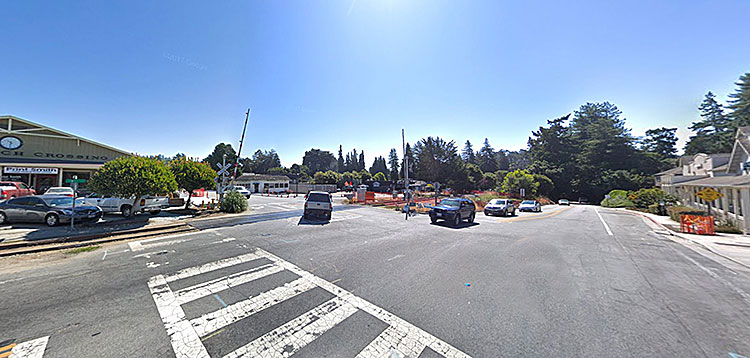By Zach Friend

Here is an overview of our local roads, the costs to maintain them, their current conditions and where your taxes go:
How large is the road network?
There are approximately 600 centerline miles in the unincorporated county. Centerline miles represent the total length of a given road from its starting point to its end point. Just to put it in perspective, this is about the same distance as driving Watsonville to Vancouver, Canada.
What are the current conditions of our roads?
Roads have different designations — such as arterials, collectors and local roads. An example of an arterial road would be Soquel or Freedom Blvd. Collectors would include Sumner or Clubhouse and local roads are the roads you most likely live on (residential roads).
What does it cost to maintain or repair the roads?
While construction costs are constantly fluctuating, one thing that is constant is that it’s much cheaper to maintain a road in good condition than to repair and rebuild a road in poor condition. According to Public Works, here are the costs per mile for doing road work on a road in good, fair, poor and failed condition.
For a road in good condition, to do a single layer seal with no digouts, it costs approximately $141,000 per/mile. For a road in fair condition (with a PCI somewhere in the 50-70 range for example), it would cost about $352,000 per/mile for a multilayer seal with digout work. This is the average range for our arterial roads.
For a road in poor condition, $563,000 per/mile and includes a full overlay and digouts. Many of our local roads and some of our collectors fall into this category. For a road in failed condition, which includes many roads in the rural areas (including the Aptos hills) as well as some of the agricultural areas in Corralitos and some local/residential roads the cost for full reconstruction is close to $1.1 million per/mile.
What do my taxes go to?
The county has a different funding structure than cities. Over half of all county revenues come from the state and federal government. These funds are generally pass-through funds to provide mandated services such as health programs or jail programs. These funds are restricted in their use and generally can’t be used for local road repairs.
Approximately 22 percent of the county revenue comes from local taxes. These taxes include property taxes, vehicle license fees, taxes paid at local hotels and sales taxes.
And while property taxes make up about half of that 22 percent, only 13 cents of every property tax dollar goes to the County. This means, for every dollar of property tax you pay, only 13 cents goes to the County for services.
So where does the rest of your property tax go to? The largest share, about 57% goes to schools while another 18% goes to local special districts, cities and the libraries. Why does such a small amount stay with the county? The distribution is determined based on what our county was collecting the year before Prop. 13 were passed. This means that some counties, such as Santa Clara and San Mateo, keep between 2 and 4 times what we can keep.
What about Measure D and SB 1 funding?
For our district Measure D funding (depending upon how sales taxes do in a given year) brings in approximately $900,000/year for local roads. This is a significant infusion that wasn’t available before its passage. As you can see on the cost for roadwork above, it makes it hard to do reconstruction work on failed roads but it does help improve roads that are at-risk or improve roads that are in poor condition.
This past year a number of roads in La Selva were done via Measure D funding. Measure D (county wide) is anticipated to bring in about $2.7 million in funding.
While SB 1 (gas tax) funding is currently being used for major storm damage repairs, at its peak in a few years it’s estimated to bring in about $4 million in new money to the entire unincorporated area.
Additionally, the County averages at least $1 million/year in state and federal grant funding and more funds come from a refuse vehicle impact fee and more. Overall, it’s estimated that about $8 million per/year on average will be brought in for the 600-centerline miles of road.
According to Public Works there are currently about $267 million in needs for the local roads, which will grow as some roads have conditions that are worsening.
If you have a pothole or non-emergency road issue you can submit service requests through the County’s free mobile app, Citizen Connect, available on the app store or Google Play, online via the Public Works Department’s website (found via www.santacruzcounty.us) or by calling 454-2160.
•••
As always, if you have any questions about this or any other issue please feels free to contact me at 454-2200.